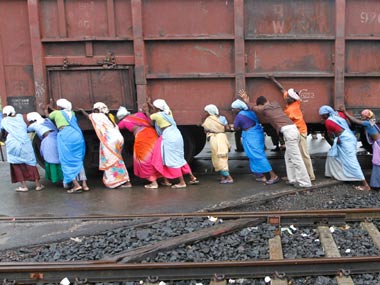Cash-strapped Indian Railways plans to hire 100,000 people in the new financial year starting 1 April.
That’s on top of the 80,000 employees it hired in the current financial year.
Employee costs are already a big burden for the public-sector behemoth, which is believed to be India’s largest employer with about 1.3 million employees.
[caption id=“attachment_244443” align=“alignleft” width=“380” caption=“Employee costs are already a big burden for the public-sector behemoth, which is believed to be India’s largest employer with about 1.3 million employees. Reuters”]  [/caption]
In the financial year ending March 2011, 54 percent of the Railways’ ordinary working expenses was made up of wage expenses (excluding pensions), even though there was a decline of 34,000 in the employee headcount. Fuel costs accounted for another 25 percent of expenses. In the current financial year also, half the working expenses will be accounted for by staff costs.
Even as the Railways struggles to boost revenues and upgrade and maintain its 115,000 kilometre network, it will be taking on the additional burden of paying salaries to another 100, 000 recruits.
It is difficult to see how it will generate those funds on its own: the current financial year has been a washout, with freight loading targets lowered by 23 million tonnes to 970 million. Freight traffic brings in about 67 percent of gross revenues for the Railways; it also subsidises passenger fares, which were modestly raised today in the Railway Budget after eight years.
In the financial year ending March 2011, Railways earned a profit of Rs 6,346 crore before dividend payments. In the current financial year, the Railway Budget projects a shortfall in gross tariff revenues of Rs 2,322 crore over budgeted estimates.
Impact Shorts
More ShortsThere’s still a lot of uncertainty of how the Railways will perform next year given the recent hike in freight rates and a slowing economy.And yet, the spending on salaries is set to continue.


)

)
)
)
)
)
)
)
)



